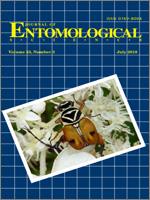BioOne.org will be down briefly for maintenance on 14 May 2025 between 18:00-22:00 Pacific Time US. We apologize for any inconvenience.

Insecticidal Control for the Rice Stink Bug (Hemiptera: Pentatomidae) Complex Found in Florida Rice1
No abstract available
No abstract available
No abstract available
